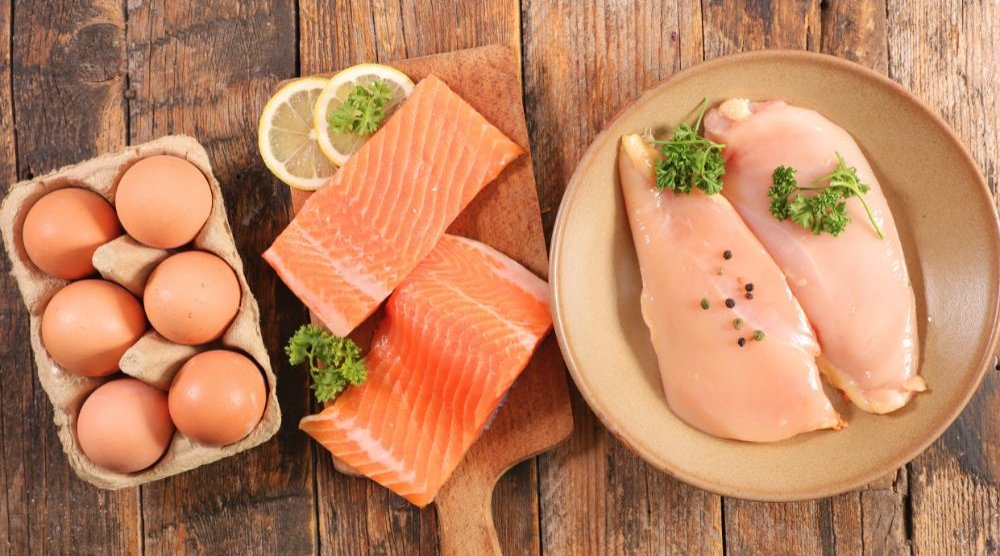Choosing healthy protein sources is vital for maintaining a balanced diet and supporting overall health. Whether you’re aiming to build muscle, lose weight, or simply eat better, understanding which protein options are nutritious can help you make informed choices. Here are some tips for choosing healthy protein sources, including fish options like tuna and salmon.
1. Prioritize Lean Proteins
Why It Matters:
Lean proteins provide essential amino acids without the excess saturated fats that can contribute to heart disease.
Healthy Options:
- Poultry: Skinless chicken and turkey are excellent lean options.
- Fish: Salmon and tuna are both nutritious choices. Salmon is rich in omega-3 fatty acids, while tuna offers a high protein content with lower calories.
- Lean Cuts of Meat: Look for cuts labeled as “loin” or “round,” such as sirloin or tenderloin.
2. Incorporate Plant-Based Proteins
Why It Matters:
Plant-based proteins are often lower in calories and fat while being high in fiber, which can aid digestion and promote satiety.
Healthy Options:
- Legumes: Beans, lentils, and chickpeas are versatile sources of protein.
- Nuts and Seeds: Almonds, chia seeds, and hemp seeds provide protein along with healthy fats.
- Whole Grains: Quinoa, farro, and barley are good protein sources that also offer complex carbohydrates.
3. Check for Added Ingredients
Why It Matters:
When choosing protein products, be mindful that many processed sources can contain added sugars, sodium, and unhealthy fats.
Healthy Options:
- Read Labels: Choose products with minimal ingredients and avoid those with excessive additives.
- Protein Bars and Shakes: Opt for those that use natural sweeteners and whole food ingredients.
4. Consider Dairy Alternatives
Why It Matters:
Dairy can be a good source of protein, but some may be lactose intolerant or prefer plant-based options.
Healthy Options:
- Greek Yogurt: Higher in protein than regular yogurt and often lower in sugar.
- Cottage Cheese: A great source of casein protein, which digests slowly.
- Fortified Plant Milks: Options like almond, soy, or oat milk that are fortified with protein and calcium.
5. Pay Attention to Portion Sizes
Why It Matters:
Even healthy protein sources can contribute to excess calorie intake if consumed in large amounts.
Tips:
- Balanced Plates: Aim for a portion size of about 20-30 grams of protein per meal, depending on your dietary needs.
- Listen to Your Body: Pay attention to hunger and fullness cues to help regulate intake.
6. Rotate Your Protein Sources
Why It Matters:
Diversifying your protein sources ensures you receive a wide range of nutrients and prevents dietary boredom.
Tips:
- Mix It Up: Alternate between animal-based and plant-based proteins throughout the week, including options like tuna and salmon.
- Try New Foods: Explore different cuisines that emphasize various protein sources, like tofu in Asian dishes or lentils in Mediterranean recipes.
7. Focus on Whole Foods
Why It Matters:
Whole foods are generally more nutrient-dense than processed options and provide additional health benefits.
Healthy Options:
- Fresh Fruits and Vegetables: Pair protein sources with colorful produce to maximize nutritional intake.
- Unprocessed Foods: Choose whole foods like fresh meats, beans, and whole grains over pre-packaged items.
Quick Guide to Healthy Protein Choices
| Protein Type | Examples | Key Benefits | Tips |
|---|---|---|---|
| Lean Animal Proteins | Skinless chicken, turkey, lean beef cuts | High in complete protein, low in saturated fat | Choose cuts labeled “loin” or “round” |
| Fish & Seafood | Salmon, tuna, sardines | Rich in omega-3s, heart-healthy | Aim for 2 servings per week |
| Plant-Based Proteins | Lentils, beans, quinoa, tofu | High in fiber, lower in fat, nutrient-dense | Mix with grains or veggies for complete meals |
| Dairy & Alternatives | Greek yogurt, cottage cheese, soy milk | Calcium-rich, protein-packed | Choose low-sugar or unsweetened options |
| Nuts & Seeds | Almonds, chia seeds, hemp seeds | Healthy fats, fiber, plant protein | Watch portions—high in calories |
Conclusion
Choosing healthy protein sources is a vital part of a balanced diet. By prioritizing lean meats, incorporating plant-based options, and considering nutritious fish like tuna and salmon, you can make informed decisions that support your health goals. Remember to consider portion sizes and rotate your protein sources to ensure a diverse and nutritious diet. With these tips in mind, you’ll be well on your way to making healthier protein choices.
Frequently Asked Questions (FAQ)
Lean meats like skinless poultry, fatty fish such as salmon, legumes, nuts, seeds, and low-fat dairy or fortified plant-based alternatives are all healthy options.
Protein needs vary by age, activity level, and health goals, but a general guideline is 0.8–1.2 grams of protein per kilogram of body weight.
Yes, when consumed in variety. Combining plant sources like beans and grains ensures you get all essential amino acids.
They can be, but always check the ingredients. Select products with complete food sources and less added sugar.
Stick to balanced meals with appropriate portions—around 20–30 grams of protein per meal—and listen to your hunger and fullness cues.

